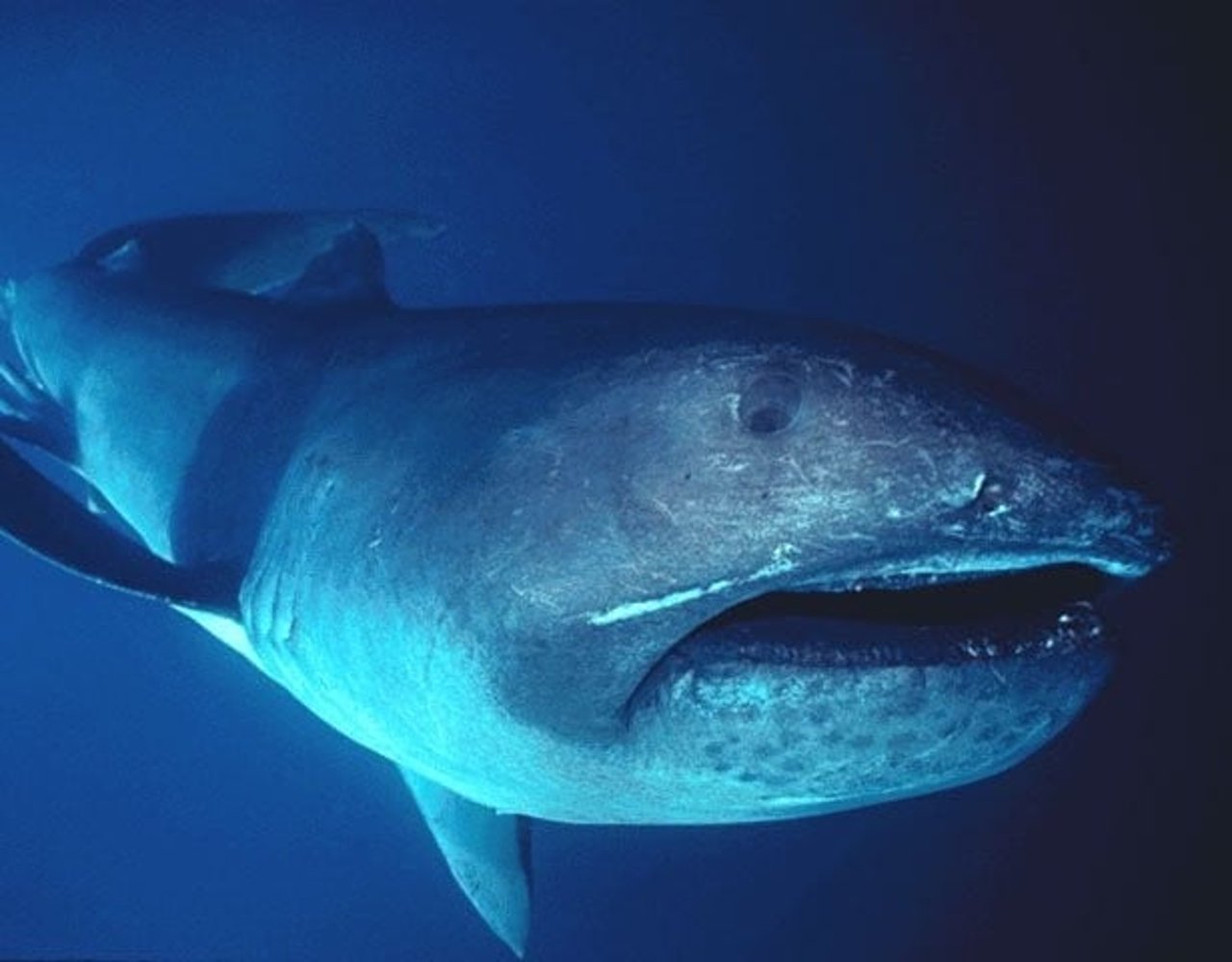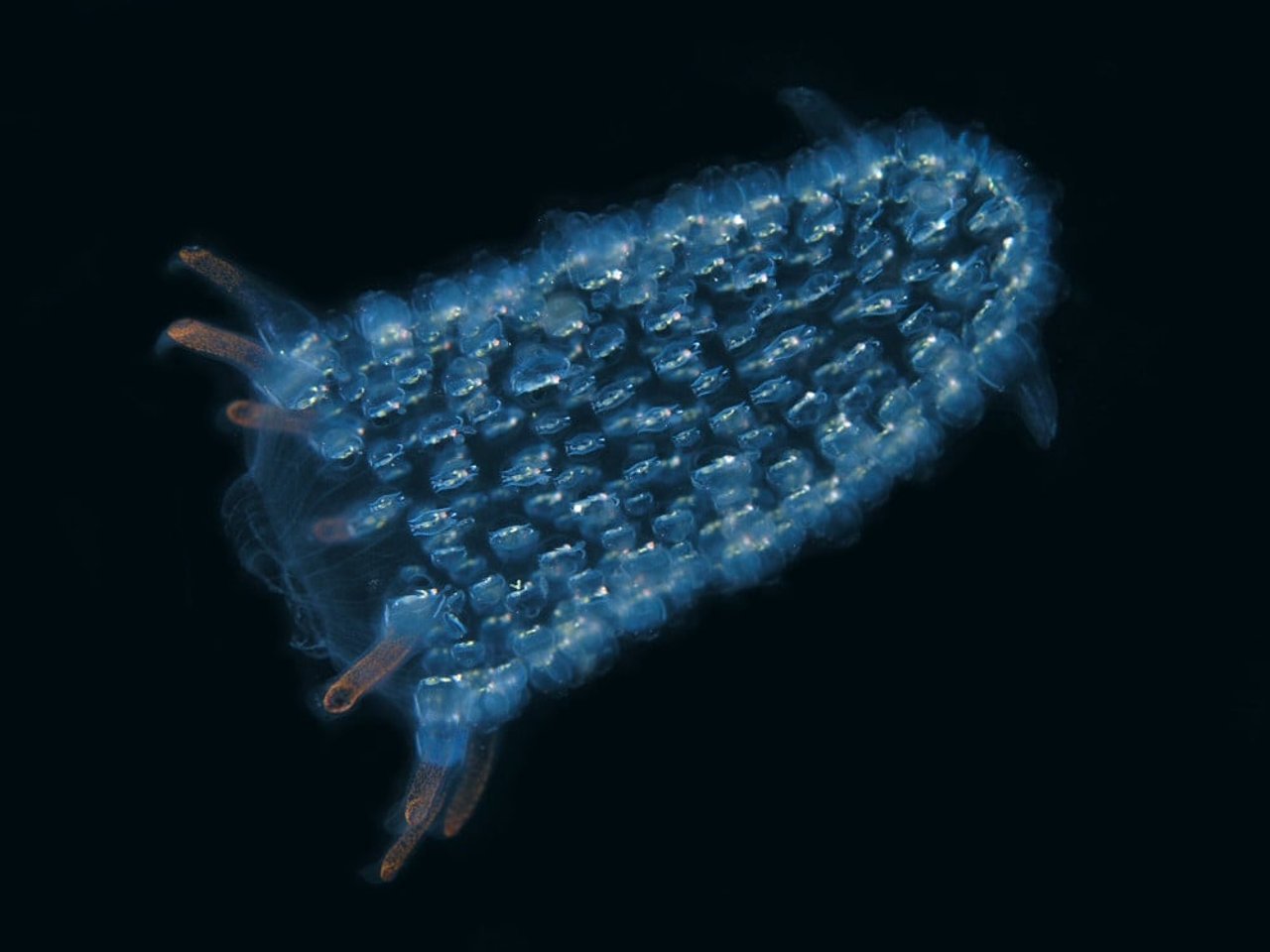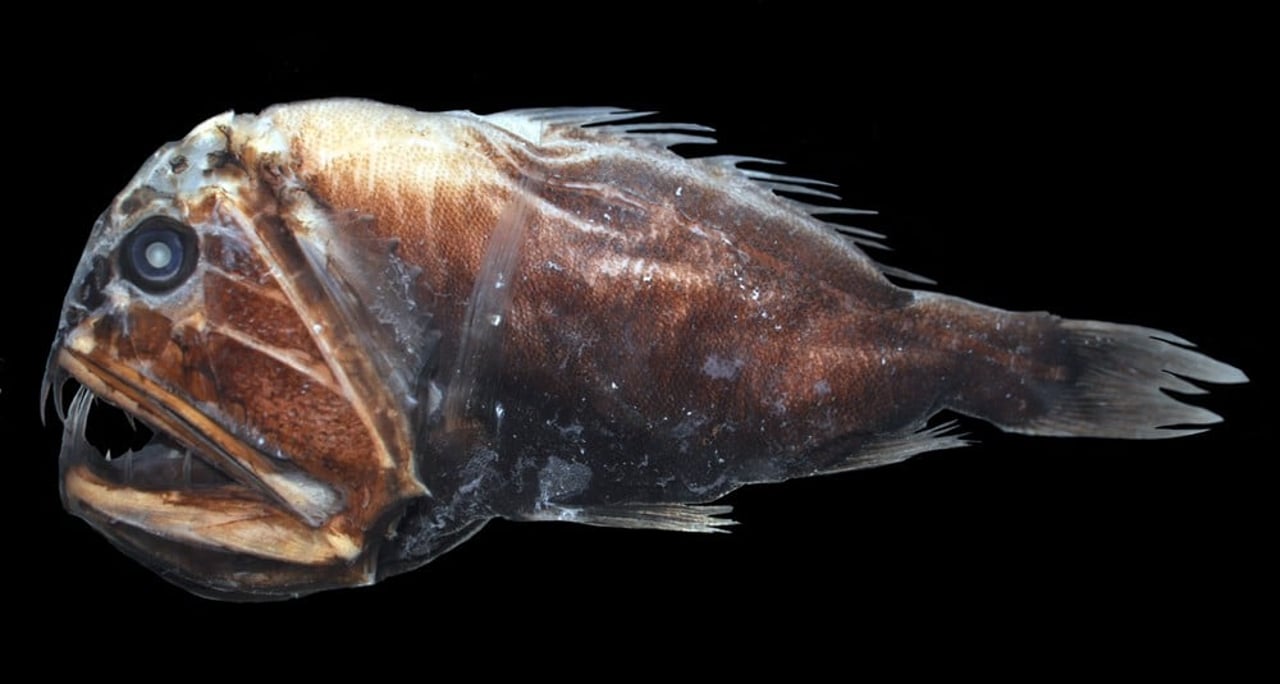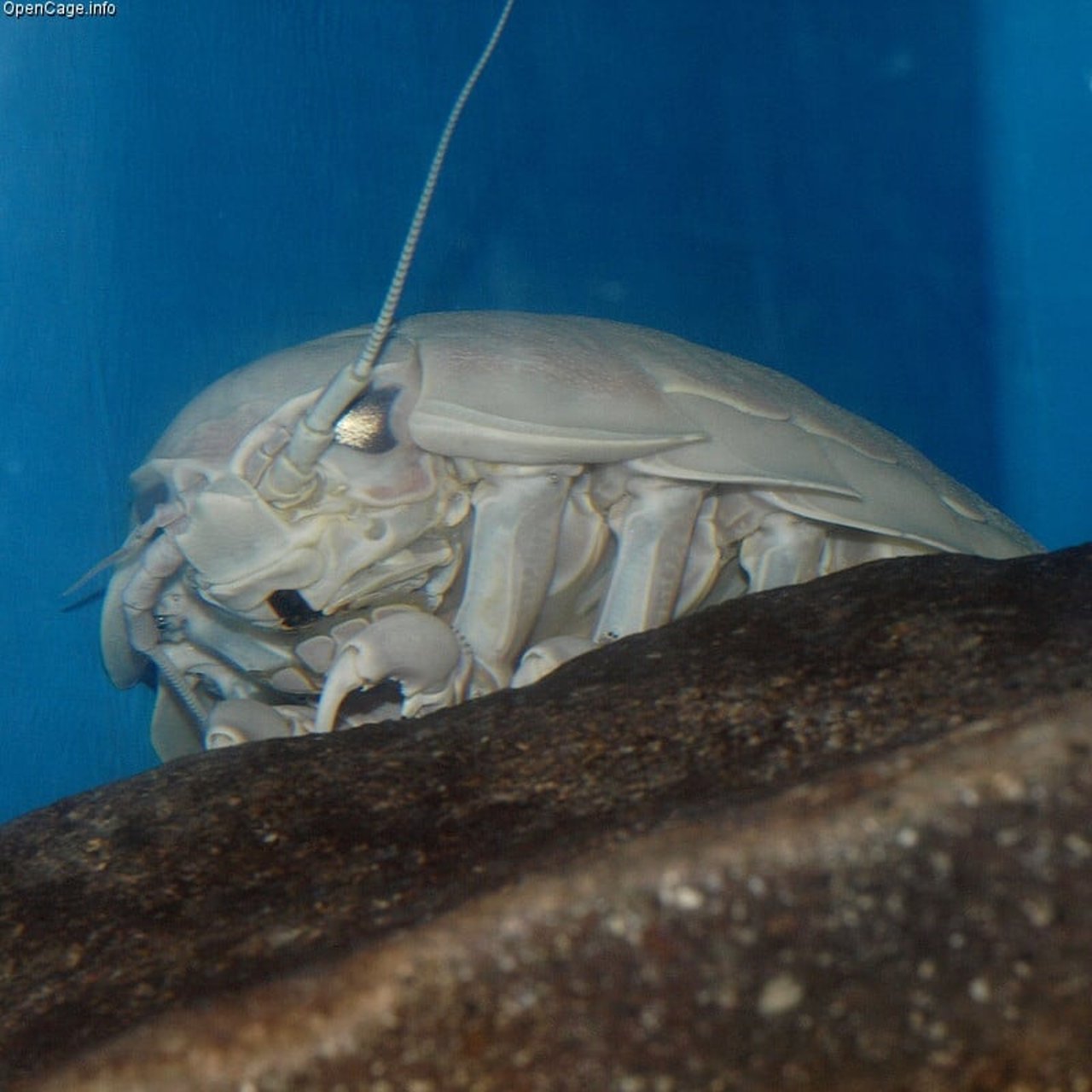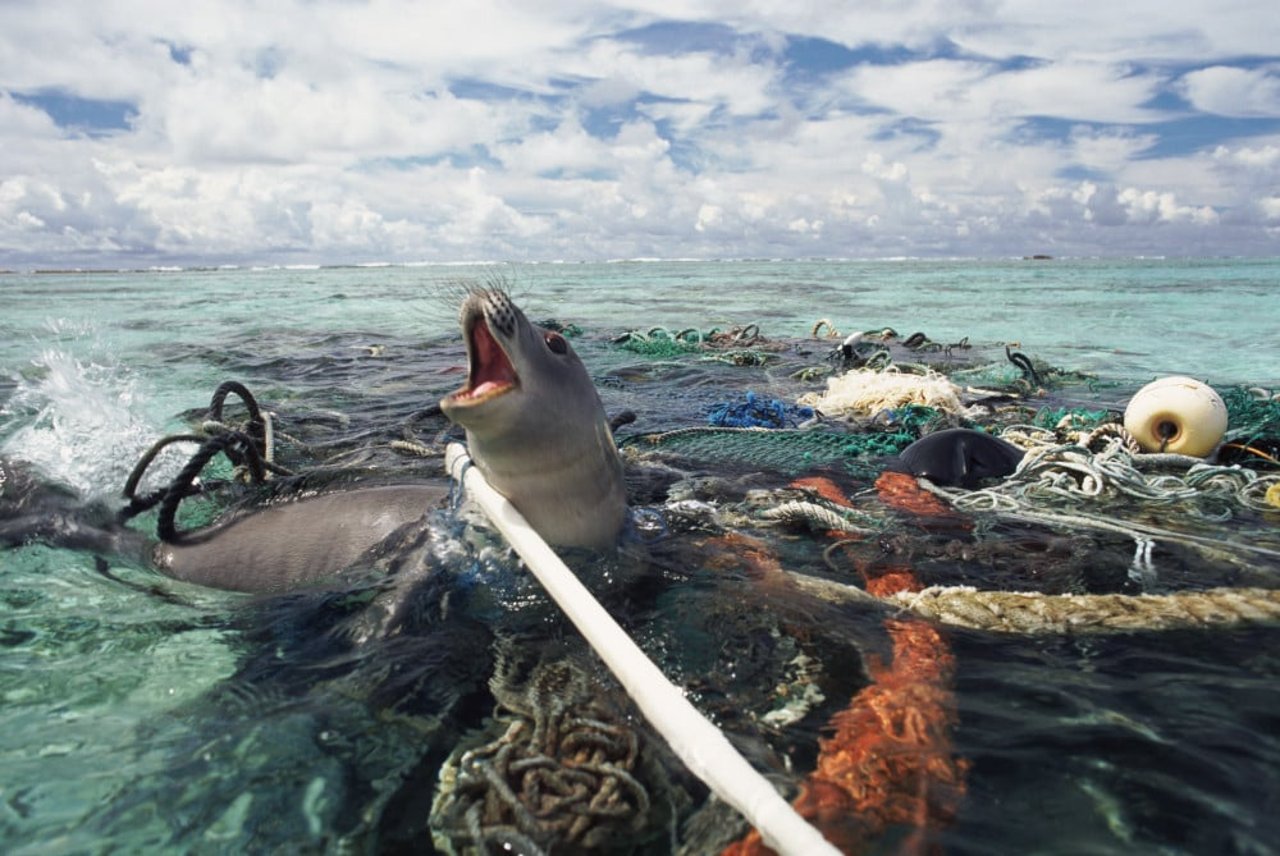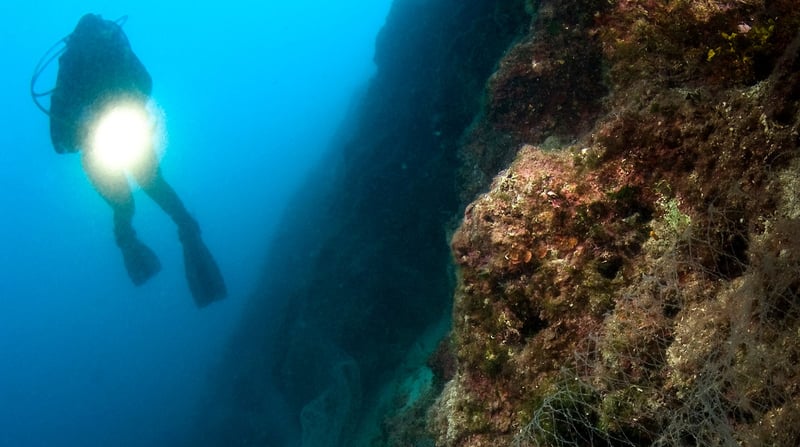
The mystery of what lurks beneath the deep has provided fodder for horror stories throughout generations. But of all the strange things in the ocean, what is the absolute scariest?
Hallowe’en is fast approaching, so I asked our Sea Change campaigners to fish out the most terrifying ocean predators they know of. Take a look at our top 10 list of the weird deep sea creatures you’ll find in the ocean.
9. Northern stargazer
The northern stargazer is a ninja-fast fish who hides its body in the sandy ocean floor, waiting for its dinner to float past. With its eyes and mouth on top of its head, it’s perfectly primed to snap off any toes, fingers, or other dangling body parts that pass through its zone of terror. We wouldn’t advise going trick or treating with this guy.
8. Megamouth shark
Image: FLMNH Ichtyology
Like the name suggests, the megamouth shark’s mouth is huge – and it has 100 rows of teeth that actually glow to attract prey. The megamouth shark swims along with his mouth wide open, sucking in food as he goes along. But don’t be too worried, these teeth are reserved for eating mostly krill. So unless you’re something similar to a piece of plankton, this extremely rare shark poses no real threat to you.
7. Frilled shark
With such a pretty name you’d think the frilled shark would be the kind you’d invite around for tea and cupcakes. However, the presence of its snake-like body and set of 300 needle teeth might make for slightly awkward conversation. Despite its scariness, though, we’re sure this near threatened shark, like all marine animals, just wants to be loved. We’re willing to give friendship a go – as soon as we’ve finished screaming.
6. Salp
Image: Nick Hobgood
At first glance, this bright little blob just looks like a weird jellyfish. But the salp is actually a cloning machine, reproducing hundreds of replica salps through asexual reproduction. Each of the mini-me salps will grow at a rate of 10% of their size per hour and will jointly devour tonnes of phytoplankton in a single meal. You can run, but you can’t hide, phytoplankton.
5. Predatory tunicate
This hermaphrodite invertebrate is effectively a ravenous mushroom with a mouth like a Venus fly trap, eating anything that innocently passes through its territory. Anchored in the ground, the predatory tunicate only moves when opening its mouth. It draws in water and food through its ghostly mouth, slowly digesting its prey in the stalk of its belly.
4. Fangtooth fish
Image: Citron / CC-BY-SA-3.0
Also known as the ‘ogrefish’, the fangtooth is one of the deepest living fish currently in existence, found at around 16,000 metres below sea level in every ocean in the world. As hardly anything else lives so deep in the ocean, fangtooth has very little to eat and so is almost constantly in a state of starvation. Because of this lack of food, it has evolved to have a permanently open jaw so it can eat anything that crosses its path. I can’t say it’s making deep sea diving very appealing…
The fangtooth fish is thankfully only around seven inches in length. But about six-and-a-half of those inches are pure terror.
3. Giant isopod
Image: OpenCage
I’m not going to say anything about this one. Just one look at this photo has got me praying for help.
2. Pacific viperfish
First, it lures you in with its sultry, warm glowing belly; then, before you know it, your skull has been impaled by one of its needle sharp protruding teeth. The single kindness that the viperfish offers is a quick death, but that doesn’t make it any less scary.
Not much is known about this deep sea species as only a few have ever been studied. What we do know, however, is that the viperfish can live up to the 30 years in the wild, but can only survive a few hours when in human contact. Perhaps it’s more scared of us than we are of it?
You’ve made it through to the final and most terrifying predator of the ocean. But this one, unlike the other eight, isn’t actually a living creature. It’s…
1. Ghost gear
Image: Michael Pitts / naturepl.com
It might look harmless, but it’s called ‘ghost’ gear for a reason. Up to 640,000 tonnes of discarded, lost or abandoned fishing nets, lines, and traps is lost or abandoned by commercial fisheries each year, entangling and endangering marine wildlife; haunting every ocean and sea on the planet.
Ghost gear is the stuff of nightmares for all ocean inhabitants, from dolphins to whales and sea turtles. Viperfish and isopods are at risk, too.
Even great white sharks can’t escape ghost gear – so what chance does every other sea creature have?
Help make the sea less of a scary place
Despite the seriousness of this situation, there is some good news. You can help save ghost gear’s victims.
Keep an eye out for ghost gear while you’re out spending a day at the beach, surfing, swimming or sailing; pick it up and dispose of it responsibly. Abandoned fishing nets, lines, and traps are all considered ghost gear, but all other marine litter also needs to be removed.
Each time you help clean up, you help save one of our ‘scary’ ocean friends from being entangled by or ingesting it. And by cleaning up their habitat, these sea creatures may not even scare us so much anymore.
Find out more about how you can help marine animals around the world.
Happy Hallowe’en!
